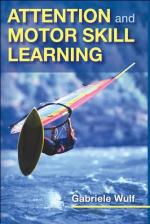|
This section contains 1,415 words (approx. 5 pages at 300 words per page) |

|
A variety of motor skills occur in various forms of movement: work, play, sport, communication, dance, and so on. Psychophysical studies of the learning and retention of motor skills date from the 1890s, with neurophysiological studies coming later. Attempts to combine cognitive and neural approaches flourished in the twentieth century (Bernstein, 1967) and persist unabated, capitalizing on advances in technology.
The theoretical and operational emphases of this field parallel those in other subdomains of learning, in part because motor, perceptual, and cognitive skills are not mutually exclusive and in part because of anatomical advances that show the underlying modular architecture of the brain (Houk, 2001). Definitions of motor skills typically pertain to the movements of the limbs and torso as opposed to those of perceptions and the formulation of ideas, but the conceptual boundaries blur in the face of the planning that precedes elaborate motor acts...
|
This section contains 1,415 words (approx. 5 pages at 300 words per page) |

|


